Choosing the Right Pallet Inverter for United Kingdom's Demands in Brexit-ready pallet change compliance
You're running a successful business in the United Kingdom. But since Brexit, a simple piece of wood is causing major headaches. Your shipments to the European Union are being delayed, or worse, rejected. The reason? The pallets you're using aren't ISPM 15 compliant. The manual process of swapping loads to new, heat-treated pallets is slow, physically demanding for your team, and often results in damaged goods. Every delayed shipment erodes your profits and strains your customer relationships. The pressure to find a fast, safe, and reliable solution is mounting every day.
To choose the right pallet inverter for UK Brexit compliance, you must first evaluate your specific operational needs. This includes analyzing your load's weight, dimensions, and fragility, determining the required throughput speed, and assessing your available floor space and level of automation. A 180-degree inverter is ideal for robust, boxed goods, while a pallet changer or exchanger system is better for delicate or unstable loads. The correct choice ensures a seamless, efficient switch to ISPM 15 compliant pallets, securing your trade with the EU.
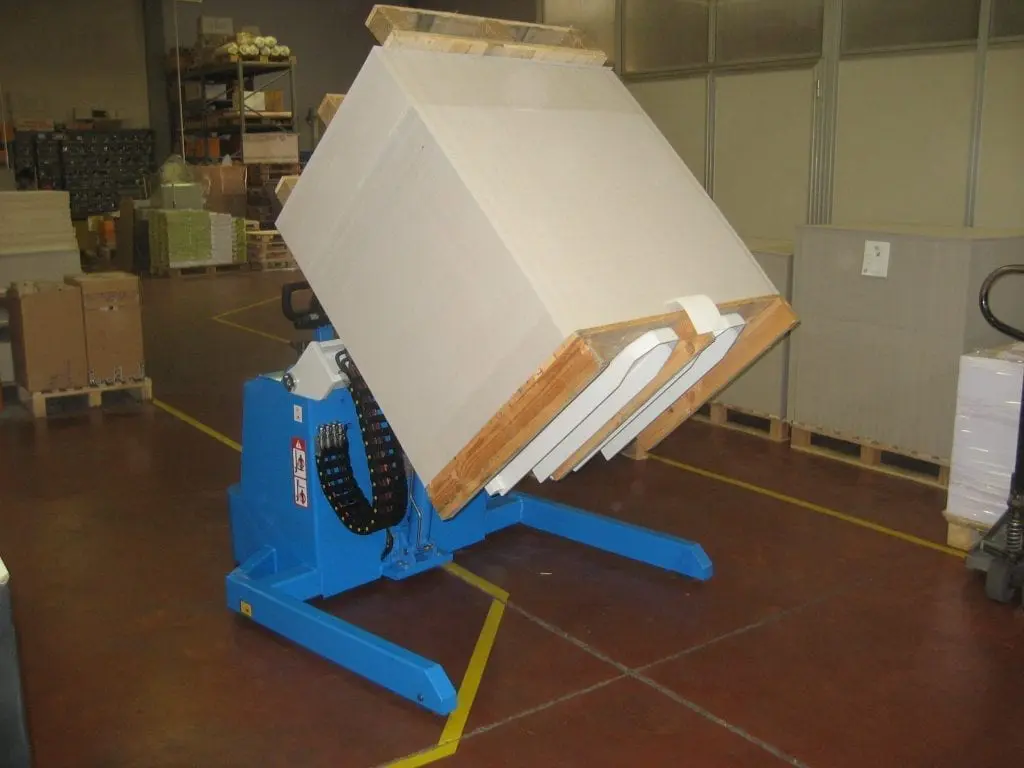
Making the right choice goes beyond just solving the immediate compliance problem. It's a strategic investment in the efficiency and safety of your entire logistics operation. The market offers various types of pallet inverters, each with unique strengths. Understanding these differences is the first step toward finding a solution that not only meets today's regulations but also supports your company's growth for years to come. In this article, I'll walk you through the critical questions you need to ask to find the perfect fit for your UK-based business.
What are the different types of pallet inverters and which is best for my product?
Are you worried about damaging your products during a pallet swap? Maybe you handle sturdy, boxed goods one day and fragile, unsecured loads the next. You know you need a machine, but you fear that a one-size-fits-all solution will either be overkill for simple tasks or not gentle enough for your most valuable products. This uncertainty can lead to hesitation, leaving you stuck with an inefficient and risky manual process that directly impacts your bottom line and your ability to ship to the EU without issues.
The best pallet inverter for your product depends entirely on what you are handling. For durable, stable loads like canned goods or boxed items, a 180-degree free-standing inverter is a fast and cost-effective solution. For more sensitive, unstable, or heavy loads, such as bags of ingredients, glass bottles, or heavy industrial parts, a pallet changer or a 90-degree tipper offers a gentler, more controlled transfer. Assessing your product's characteristics against the machine's handling method is the key to making the right choice.
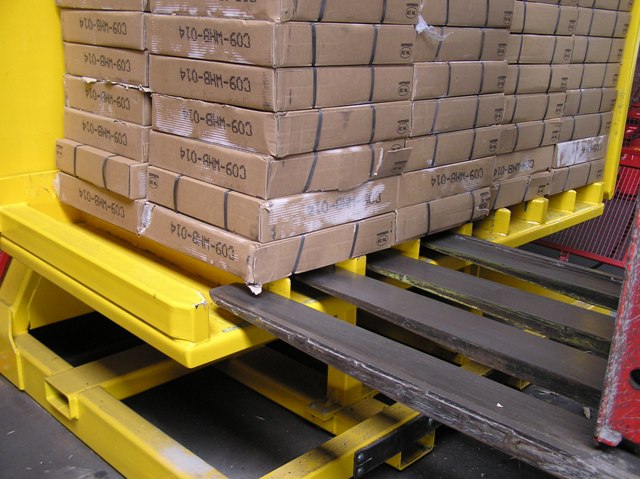
Let's dive deeper into the main types of equipment available. I've seen them all in my years in the industry, and I can tell you that the "best" machine is simply the one that fits your operation. Think of it like choosing a vehicle. You wouldn't use a sports car to haul construction materials. The same logic applies here. Your choice will have a direct impact on your operational speed, product safety, and overall efficiency.
180-Degree Free-standing Inverters
These are often the workhorses of the warehouse. They are simple, robust, and incredibly effective for the right kind of product. The machine clamps the load, pallet and all, from the top and bottom. Then, it rotates the entire package a full 180 degrees. The original pallet is now on top, ready to be removed and replaced with a Brexit-compliant ISPM 15 pallet. The machine then rotates back. This method is fast and efficient. It's perfect for goods that are solid, well-packed, and can handle being turned upside down. Think of things like sealed boxes, cans, or solid industrial components. However, if you're dealing with open-top containers, loosely stacked bags, or anything that might shift or spill, this is not the right choice for you.
Pallet Changers (Push-Pull Systems)
Pallet changers are a more sophisticated solution designed for loads that cannot be inverted. Instead of flipping the product, these machines gently push the entire load from the old pallet onto a new one. Here's how it works: The machine clamps the sides of the load to secure it. Then, a pusher plate smoothly slides the product stack from the source pallet to a waiting destination pallet positioned right next to it. This method is ideal for sensitive products like pharmaceuticals, cosmetics, or bags of powders that must remain upright. It is also excellent for very heavy or irregularly shaped loads. While they can be slightly slower than a 180-degree inverter and may require more floor space, the benefit of zero product tilting is a critical advantage for many industries.
90-Degree Tippers / Pallet Exchangers
This is a clever hybrid solution. The machine tilts the load back 90 degrees, so it rests comfortably on its side against a solid back wall. In this tilted position, the pallet is facing outwards, free from the weight of the product. The operator can then easily slide it out and replace it with a new one. The machine then gently lowers the load back down onto the new pallet. This method is gentler than a full 180-degree rotation but faster than some pallet changer models. It's a great all-around option for a wide variety of goods, including those that are slightly unstable. It provides a good balance between speed, safety, and versatility.
To help you decide, here is a simple breakdown:
| Machine Type | Best For | Handling Method | Key Advantage | Potential Limitation |
|---|---|---|---|---|
| 180-Degree Inverter | Sturdy, boxed, stable loads | Full 180-degree rotation | Speed and efficiency | Not suitable for unstable or sensitive goods |
| Pallet Changer | Sensitive, fragile, heavy loads | Pushes load from one pallet to another | Load remains upright, minimal stress | Can be slower, may need more space |
| 90-Degree Tipper | Mixed or moderately stable loads | Tilts load 90 degrees to swap pallet | Versatile and gentle on products | Not as fast as a 180-degree inverter |
How does a pallet inverter deliver a real Return on Investment (ROI)?
You look at the price of a pallet inverter and see a significant capital expense. As a business owner, your mind immediately goes to the numbers. How long will it take for this machine to pay for itself? You are facing pressure to cut costs, not add them. You worry that investing in new equipment will hurt your short-term profitability, even if it solves the Brexit compliance problem. It feels like a choice between taking a financial hit now or risking costly shipping disruptions later.
A pallet inverter delivers a strong ROI by drastically cutting operational costs and eliminating expensive risks. The investment is quickly returned through a huge reduction in manual labor hours, the near-elimination of product damage during pallet swapping, and a significant increase in throughput speed. Furthermore, it completely removes the risk of fines, rejected shipments, and emergency re-handling costs associated with non-compliance, making it a financially sound strategic investment.
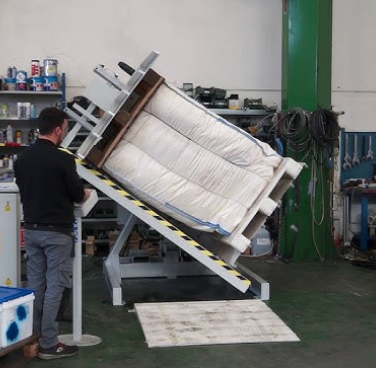
I've been in this business for a long time, both as an engineer and a factory owner. I understand the pressure to justify every single pound spent. Let's break down the return on investment for a pallet inverter not as an expense, but as a profit-generating tool. The true value isn't just in the machine itself, but in the inefficiencies it removes from your entire operation.
Reducing Labor Costs
Think about your current manual process. How many team members does it take to swap a pallet? Two? Three? How long does it take them? 15 minutes? 20 minutes? Now multiply that by the number of pallets you ship to the EU each day. A pallet inverter can be operated by a single person and completes the entire cycle in about 60-90 seconds. The labor savings are immediate and substantial. I worked with a client in the food distribution sector. They were using three people to manually de-stack and re-stack pallets. After installing a pallet inverter, they reassigned two of those employees to more value-added roles in the warehouse. The machine paid for itself in labor savings alone in under 12 months.
Minimizing Product Damage
Manual handling is inherently risky. Boxes get dropped, bags tear, and products get crushed. Every damaged item is a direct loss of profit. A pallet inverter handles the entire load as a single, secure block. The clamping pressure is calibrated to hold the load firmly without causing any damage. The movements are smooth and controlled. This reduces damage rates to virtually zero. Consider the cost of one damaged pallet of high-value goods. It could be hundreds or even thousands of pounds. Preventing just a few of these incidents a year can represent a significant portion of the machine's purchase price.
Accelerating Throughput and Avoiding Fines
Time is money in logistics. A slow, manual pallet-swapping process creates a bottleneck at your shipping dock. This slows down truck loading times and can even lead to costly driver detention fees. By automating the process, you can load trucks faster, meet tight shipping deadlines, and improve the overall flow of your warehouse. Most importantly, it guarantees compliance. The cost of a single shipment being rejected at a border can be catastrophic. You face not only fines but also the cost of storage, return shipping, and emergency re-packing in a foreign country. A pallet inverter turns compliance from a recurring risk into a guaranteed, automated step in your process.
Here is a simple ROI calculation model:
| Cost Factor | Manual Process (Per Pallet) | Pallet Inverter (Per Pallet) | Annual Savings (Example: 20 pallets/day) |
|---|---|---|---|
| Labor Cost | 2 staff x 15 mins @ £15/hr = £7.50 | 1 staff x 2 mins @ £15/hr = £0.50 | £140/day = £35,000/year |
| Damage Cost | 2% average damage rate | 0.1% average damage rate | Saves thousands depending on product value |
| Compliance Risk | High (Potential fines, delays) | Negligible (Guaranteed compliance) | Avoids unpredictable, high costs |
When you look at the numbers, the machine stops being an expense. It becomes an essential tool for cost reduction and risk management in the post-Brexit landscape.
What integration and safety features are essential for a modern UK warehouse?
You're thinking about upgrading your facility, not just buying one machine. You envision a seamless, automated workflow where data flows as smoothly as your products. But you're worried about compatibility. Will this new pallet inverter communicate with your existing conveyor systems and Warehouse Management System (WMS)? More importantly, you are responsible for your team's safety. How can you be sure that a powerful new machine won't introduce new hazards into your busy warehouse environment? The fear of a complex, standalone machine that compromises safety is a major barrier to moving forward.
For a modern UK warehouse, essential integration features include compatibility with automated conveyor lines, AGVs, and the ability to link with your WMS or MES for real-time tracking. Safety is paramount. Look for features that meet UK and EU standards, such as full safety caging, light curtain barriers at entry/exit points, and dual-channel safety circuits with emergency stops. These features ensure the pallet inverter is a safe and seamless part of a larger, efficient, and automated system.
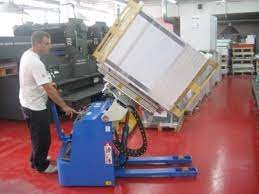
In my journey from engineer to factory owner, I learned that a machine's true power lies in how well it works with everything else. A standalone piece of equipment can solve one problem, but an integrated one elevates your entire operation. This is especially true in the context of safety and automation, which are the cornerstones of a competitive, modern facility.
Automation and System Integration
A pallet inverter shouldn't be an island. In a modern warehouse, it must be part of a connected ecosystem. Here’s what to look for:
- Conveyor Compatibility: The most efficient setups involve the pallet inverter being fed by an infeed conveyor and exiting onto an outfeed conveyor. This creates a continuous, automated flow. Look for machines that can be easily configured with powered roller or chain conveyors. The machine's controls should be able to "handshake" with the conveyor system, telling it when to stop and start.
- WMS/MES Integration: Smart factories run on data. Your pallet inverter should be able to communicate with your higher-level management systems. This could be as simple as sending a signal that a pallet has been successfully swapped, or as complex as receiving instructions on which type of compliant pallet to use for a specific order. This integration provides valuable visibility and traceability, which is critical for quality control and auditing purposes.
- AGV and Forklift Friendliness: The layout around the inverter matters. The area should be designed for easy access by both forklifts and, increasingly, Automated Guided Vehicles (AGVs). This includes clear floor markings, proper turning radiuses, and machine designs that allow for loading and unloading from multiple sides if necessary.
Essential Safety Features
Safety is not negotiable. A modern pallet inverter must be designed with safety as the primary consideration. In the UK, this means adhering to strict health and safety regulations, often demonstrated by CE or UKCA marking.
- Physical Guarding: The entire operational area of the machine should be enclosed in robust safety fencing. This physically prevents anyone from accidentally entering the machine's movement zone while it's in operation. The access gates should be interlocked, meaning the machine will immediately stop if a gate is opened.
- Light Curtains: For automated conveyor-fed systems where a physical gate is not practical, light curtains are essential. These are beams of infrared light that create an invisible safety barrier. If any person or object breaks the beam while the machine is active, it triggers an immediate and safe stop.
- Dual-Channel Safety Systems: Modern safety circuits are redundant. This means if one part of the safety system fails, a backup is in place. Look for dual-channel emergency stops and interlocks. This is a key requirement for meeting modern safety standards like PLe (Performance Level e).
- Clear Operator Controls: The control panel should be intuitive and located in a safe position with a clear view of the entire operation. It must have a clearly marked, easily accessible emergency stop button.
Investing in a machine with these features is not just about meeting regulations. It's about creating a work environment where your team can be productive and safe. It's a statement about the kind of company you run.
Why is a "strategic partner" more important than a "supplier" for post-Brexit logistics?
You need a machine, so you start looking for suppliers. You get quotes and technical data sheets. But they all start to look the same. The supplier is focused on selling you a product, on closing the deal. You feel like you're on your own to figure out the installation, the integration with your existing line, and what happens if something goes wrong. This transactional approach leaves you feeling uncertain. You need more than a machine in a box; you need a solution to a complex logistical challenge created by Brexit.
For post-Brexit logistics, a strategic partner is crucial because your challenge is more than just a missing machine. You need an expert who understands UK/EU regulations, can help you re-engineer your workflow, and provides long-term support. A supplier sells you a pallet inverter. A partner provides a total solution, ensuring the machine delivers on its promise of efficiency, compliance, and ROI for years to come.
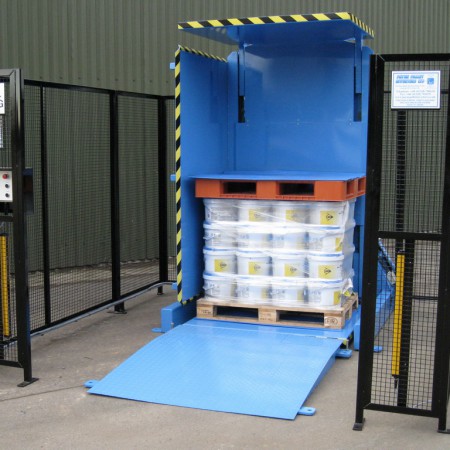
This is a lesson I learned the hard way when I was building my own factory. In the beginning, I always looked for the cheapest supplier. I thought I was saving money. But then a machine would break down, and the supplier was nowhere to be found. Or a piece of equipment wouldn't fit our workflow, and we were left to figure it out ourselves. I realized that the initial purchase price is only one part of the total cost. The real value comes from the expertise and support that surrounds the product. That is why we built SHJLPACK around the mission of being a knowledge-sharing platform and a true partner.
Beyond the Machine: The Value of Expertise
A good partner doesn't start by showing you a catalog. They start by asking questions. What are you shipping? What is your current process? What are your biggest bottlenecks? They bring years of experience from working with other companies that have faced the same challenges. They can look at your warehouse layout and suggest the best placement for the machine to optimize flow. They understand the nuances of Brexit compliance and ISPM 15 rules and can ensure the solution they propose is not just compliant today, but future-proof. This expertise is invaluable. It saves you from making costly mistakes and ensures you get the right solution the first time.
The Role of Customization
Your operation is unique. A standard, off-the-shelf machine might not be the perfect fit. Perhaps you handle an unusually shaped product, or you have severe space constraints. A supplier will try to sell you the closest standard model. A partner will work with you to design a custom solution. I remember a client in the steel industry, a man much like Javier Morales. He needed to swap pallets for heavy, unstable steel coils. No standard machine would work. We worked with his team to engineer a custom clamping and support system that could handle the coils safely and efficiently. That is the difference. A partner invests their engineering knowledge to solve your specific problem.
Long-Term Support and Maintenance
The relationship with a partner doesn't end when the invoice is paid. It begins. A true partner provides comprehensive support, including:
- Installation and Commissioning: They ensure the machine is installed correctly and integrated seamlessly into your line.
- Operator Training: They train your team on how to operate the machine safely and efficiently, and how to perform basic maintenance.
- After-Sales Service: They provide responsive technical support and have a reliable supply of spare parts to minimize any potential downtime.
In the challenging and ever-changing world of post-Brexit logistics, you need more than just equipment. You need a partner who is invested in your success.
My Insight: Beyond Compliance, It's About Competitive Advantage
I built my career, and my company, in the world of packing machinery. I started on the factory floor as an engineer and eventually built my own successful business. I've seen firsthand how the right piece of equipment can transform an operation. The current demand for pallet inverters in the UK because of Brexit is a perfect example of a challenge that holds a hidden opportunity.
Many see the need to switch to ISPM 15 pallets as a burden—another cost, another regulation, another headache. I see it differently. I see it as a powerful catalyst for improvement.
When I started my factory, every investment had to achieve more than one goal. A new machine couldn't just solve a single problem; it had to make us faster, safer, and more flexible. A pallet inverter for Brexit compliance is exactly that. Yes, it solves the immediate pallet problem. It gets your goods across the border without delays or fines. But that's just the beginning.
By automating a slow, manual process, you are forced to re-examine your entire end-of-line workflow. You start to identify other bottlenecks you never noticed before. You reduce product damage, which goes straight to your bottom line. You create a safer work environment for your team, which improves morale and reduces liability. You increase your shipping velocity, allowing you to be more responsive to your customers.
This isn't just about being compliant. It's about building a more modern, resilient, and efficient supply chain. The companies that use this regulatory requirement as a reason to upgrade their infrastructure will emerge stronger and more competitive. They will turn a logistical headache into a lasting operational advantage that will serve them long after everyone has adjusted to the new rules. That is the real prize.
Conclusion
Choosing the right pallet inverter for UK Brexit compliance is a strategic move that enhances efficiency, reduces costs, and secures your supply chain for the future.



